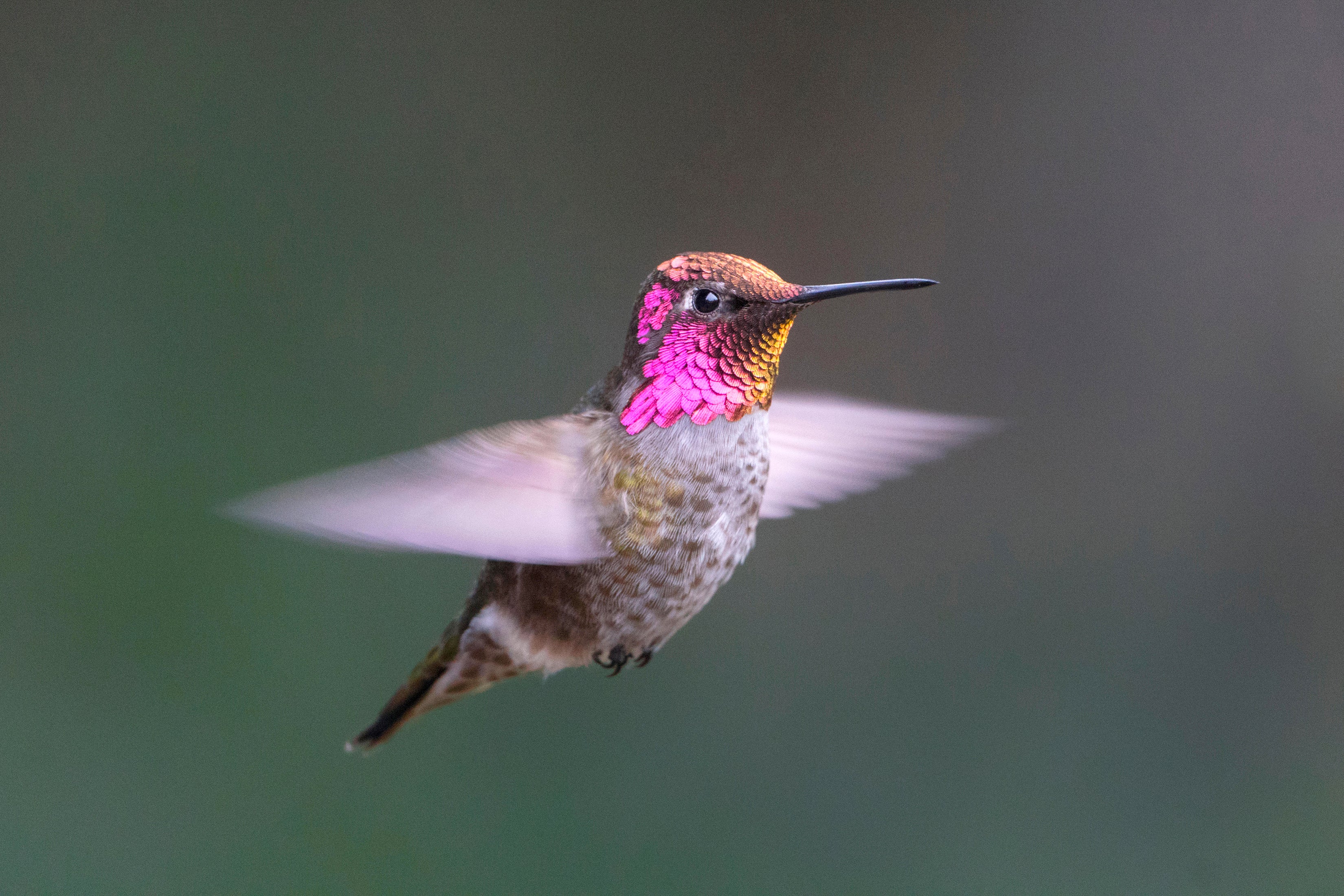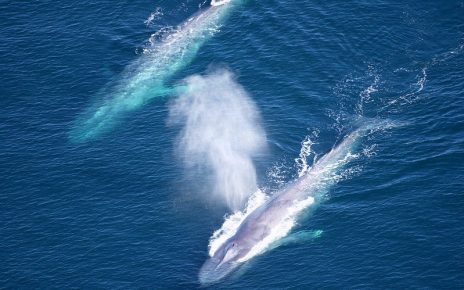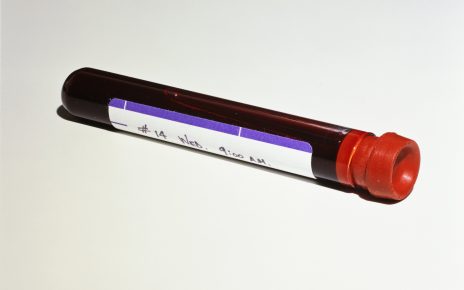
We’re all familiar with muscle conditioning or deconditioning that happens in response to exercise or lack of it. But when an active lifestyle—or, by contrast, that of a couch potato—is sustained over evolutionary timescales stretching for thousands or millions of years, that leads to dramatic changes in muscle mass, metabolism and even an animal’s biochemistry. Two recent studies reveal how some of the superathletes and couch potatoes of the animal world, hummingbirds and cavefish, have adjusted the metabolic pathways in their muscles to efficiently break down sugar or store it to suit their unique ways of life.
First, let’s take a look at a superathlete. Hummingbirds’ hovering flight, a seemingly effortless suspension in air, is achieved by burning sugar in their flight muscles at a blisteringly fast rate. But how such an adaptation evolved is a challenge to reconstruct. Recently a German team of researchers implicated the loss of a key gene, FBP2. Without it, the birds are more efficient at breaking down sugar to use it for energy. The discarding of this gene coincided with the evolution of hovering flight. Researchers learned this by comparing the timing of the gene loss with the age of key hummingbird fossils, according to findings reported in the January 13 issue of Science.
“All hummingbirds have hovering flight, and all hummingbirds are nectarivores,” says Michael Hiller, a comparative genomicist at Goethe University and the Senckenberg Research Institute, both in Germany, and senior author of the study. So it’s pretty clear that these traits evolved somewhere on the branch of an evolutionary tree after hummingbirds split from the lineage of another bird family, the swifts, but before the hummingbirds radiated into the 300-some species that exist today, he explains.
The new traits give hummingbirds their signature hang-in-the-air flight, which makes them extremely maneuverable and allows them to stay nearly stationary in the air while they drink flower nectar, often the main source of energy in their diet.
To better understand the origins of this unique ability, Hiller’s team sequenced the genome of a hummingbird species that was a relatively distant cousin of other hummingbirds: the Long-tailed Hermit. Matching this to two existing hummingbird genomes (Anna’s Hummingbird and the Black-breasted Hillstar) allowed the researchers to pinpoint genetic changes that occurred in the ancestors of all hummingbirds. Hiller reasoned that hovering flight had to have evolved somewhere on that ancestral branch, and genetic changes that occurred there could have contributed to the evolution of this trait.
By comparing the hummingbird genomes with the chicken genome, which is a well-annotated reference genome for birds as a whole, the researchers identified five genes hummingbirds had lost, including FBP2, which was previously known to be involved in sugar metabolism. Sugar circulating in the bloodstream is taken up by cells. And once inside, the sugar is broken down by enzymes in a process called glycolysis. This results in two molecules that each carry three carbon atoms plus two molecules of ATP, which cells use as fuel in all sorts of processes, including muscle contraction. These biochemical reactions move in both directions, forward and back. The backward flow—taking up two three-carbon molecules to make a sugar—is called gluconeogenesis. FBP2 encodes an enzyme in muscle cells that catalyzes this reversal of glycolysis.
In typical muscle tissue, this enzyme takes up small carbon molecules to make sugar. But hummingbirds have lost FBP2, which means their muscles cannot catalyze the synthesis of sugar from small carbon molecules, Hiller and his colleagues hypothesized that the loss of FBP2 makes the forward glycolysis reaction more efficient, accelerating the hummingbird’s ability to break down sugar, which it consumes in abundance through its nectar diet.
To test this idea, they needed to do an experiment. They were constrained by the fact that it’s nearly impossible to genetically manipulate a living bird such as a chicken and knock out FBP2 to measure the effect. Instead the researchers used a quail muscle cell line to knock out FBP2. They then measured the rate of glycolysis in the quail muscle cells and showed that the process indeed runs faster when the gene is knocked out. In addition, the cells with the FBP2 knockout also had more mitochondria for reasons that are still not completely understood. “In the literature, there’s good evidence that hummingbird flight muscle has more mitochondria and high capacity for processing sugar,” Hiller says. “The effects we saw [in the cell line] are at least consistent with observations in hummingbird muscle.”
With further genome analysis, the researchers discovered that the loss of FBP2 must have happened between 46 million and 34 million years ago. This estimate coincided with paleontological evidence that turned up about 20 years ago in the form of two key fossils found in Germany. One fossil, which still looks like that of a swift, dates back 48 million years, while the other, an early fossil on the branch that split from the swift lineage, had changes in the configuration of the shoulder girdle bones, making it biomechanically capable of hovering flight. It is therefore the oldest known hummingbird, and it is about 35 million to 30 million years old.
The similarity between the estimated age of the FBP2 mutation and the ages of the fossils is convincing evidence that this mutation contributed to hovering flight, Hiller says. Still, he cautions, knocking out this gene in another bird probably isn’t enough to produce such flight—this adaptation likely required several steps, including the changes in the shoulder girdle. “The way I think about it, it’s one of these knobs that evolution was tuning to give hummingbirds this adaptation of hovering flight,” Hiller says. “It probably required several steps or many steps, but we think this is one of them.”
Indeed, evolution can tune key metabolic pathways in many different ways to suit the demands of particular environments. The Mexican cavefish, which lives in dark caves, has metabolic challenges of a different kind. Since these cavefish split from their river ancestors about 160,000 years ago, they have developed numerous changes to survive inside the nutrient-poor caves. For one, because they have no predators, they have slowed their swimming speeds, compared with the surface fish from which they evolved.
“We know that when humans decrease movement for just a day or two, this can have profound effects on the muscle,” says Luke Olsen, a graduate student at the Stowers Institute in Missouri, who led a new study about cavefish muscle published in Proceedings of the National Academy of Sciences USA on January 24. “Thinking about the cavefish, if they have decreased their movement, how has their muscle changed over 160,000 years?”
Muscle is extremely important for regulating whole-body metabolism,” explains Tray Wright, who studies animal physiology at the University of Texas Medical Branch at Galveston. “In many animals, muscle mass can make up 40 to 50 percent of their body mass, and it is a really metabolically demanding tissue. By tuning that metabolism in the muscle, you really affect a lot of animal fitness.”
To better understand the consequences of the cavefish’s loss of muscle mass, Olsen and his colleagues dissected muscle fibers from both cavefish and surface fish and electrically stimulated them. The researchers found that the cavefish muscle fibers contracted with less force than those of surface fish. “That’s a really important point because that’s exactly what we see in humans who are obese,” Olsen says.
To test if this actually translated to the fish not being able to swim at high speeds, the team created a swim tunnel—a kind of treadmill for the fish, where they could force them to swim against a water current of varying speeds. He gradually increased the flow until the cavefish fatigued. Surprisingly, cavefish were able to swim just as fast and as long as surface fish. Olsen and his colleagues hypothesized that the large amounts of sugar stored as glycogen in cavefish muscles provided the energy needed to sustain muscular contractions during the swimming endurance test.
As predicted, before exercise, the cavefish had more glycogen in their muscles than the surface fish did, but after the swim test, their glycogen level plummeted. When Olsen and his colleagues looked at what was going on biochemically in cavefish muscle, they found increased levels of both enzymes that store glycogen and those that break it down. One of these enzymes, phosphoglucomutase 1 (PGM1), was activated through phosphorylation—the addition of phosphate chemical groups—in cavefish but not in surface fish. In fact, two of the sites that were phosphorylated on this enzyme in cavefish are mutated in humans with glycogen-storage diseases. In humans, if PGM1 is mutated at one of these sites and can’t be phosphorylated, it causes the person to fatigue easily, Olsen explains. These same sites are hyperphosphorylated in cavefish, which may explain why they are slow to fatigue during swim-tunnel experiments.
The researchers then focused on a specific phosphorylation site and created a mutation that prevented it from being phosphorylated. Cells with this mutation lost much of their ability to make glycogen.
“What this told us was that this specific location that we found to be hyperphosphorylated in cavefish leads to a change in PGM1 activity, where it takes incoming glucose and converts it to glycogen,” Olsen says. Increasing the activity of PGM1 increases the muscle’s ability to make and store glycogen, which explains why the fish have so much glycogen in their muscles.
Olsen and his supervisor at the Stowers Institute, Nicolas Rohner, believe that this is adaptive for the cavefish because when the caves flood about once a year, the water currents can be very strong. The cavefish have to swim against these currents to stay in the caves; if they are swept out of the caves, they will not survive. So their metabolism must allow them to store energy to persist long periods without food, then release energy to swim against strong currents once in a blue moon. Phosphorylating PGM1, which boosts their ability to store glycogen that can be broken down when needed, lets them to do just that.
What’s fascinating, Olsen says, is that while humans with diabetes or obesity have increased inflammation, the cavefish do not, despite having lots of fat and sugar in their muscle. The researchers are interested in better understanding how cavefish remained healthy, even as their muscles evolved to store more fat and sugar.
Muscle wasting and the accumulation of sugar and fat would be detrimental in a human but are beneficial for the cavefish in their unique environment, says Misty Riddle, who studies Mexican cavefish at the University of Nevada and was not involved in the new research. “ This is [an] example of how studying cavefish and the traits that provide them an advantage could potentially relate to understanding how we can alleviate the issues that arise when humans have those traits,” she says.
The two studies illustrate two extremes of evolution. In hummingbirds, loss of a key gene in gluconeogenesis makes their muscles very efficient at breaking down sugars for energy, a requirement for hovering flight. Mexican cavefish, in contrast, have modified an enzyme to make their muscles efficient at storing sugar as glycogen, so they can withstand food scarcity yet outswim floods when required. In both cases, evolution has tuned the pathway for breaking down and storing sugar to enable new metabolic feats that help the animals survive in demanding environments.



